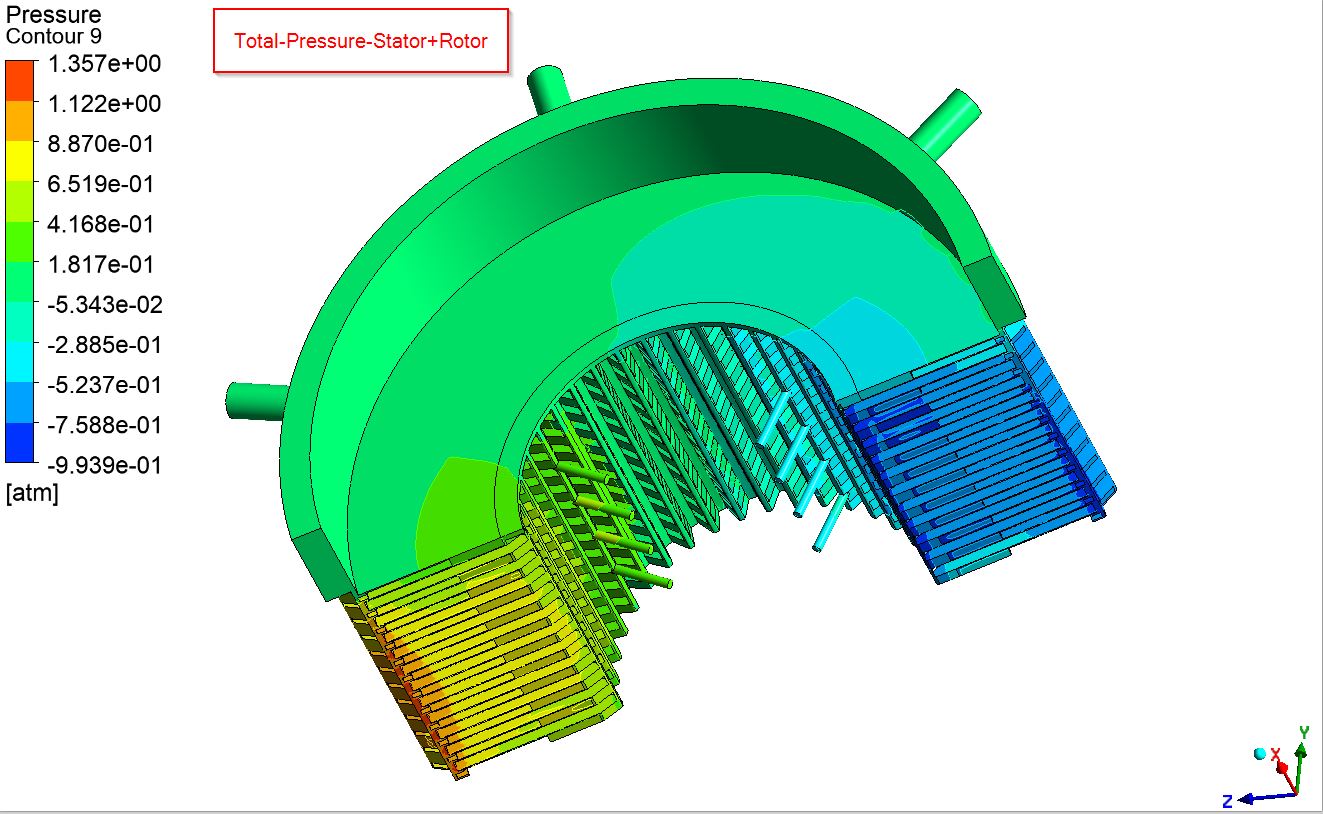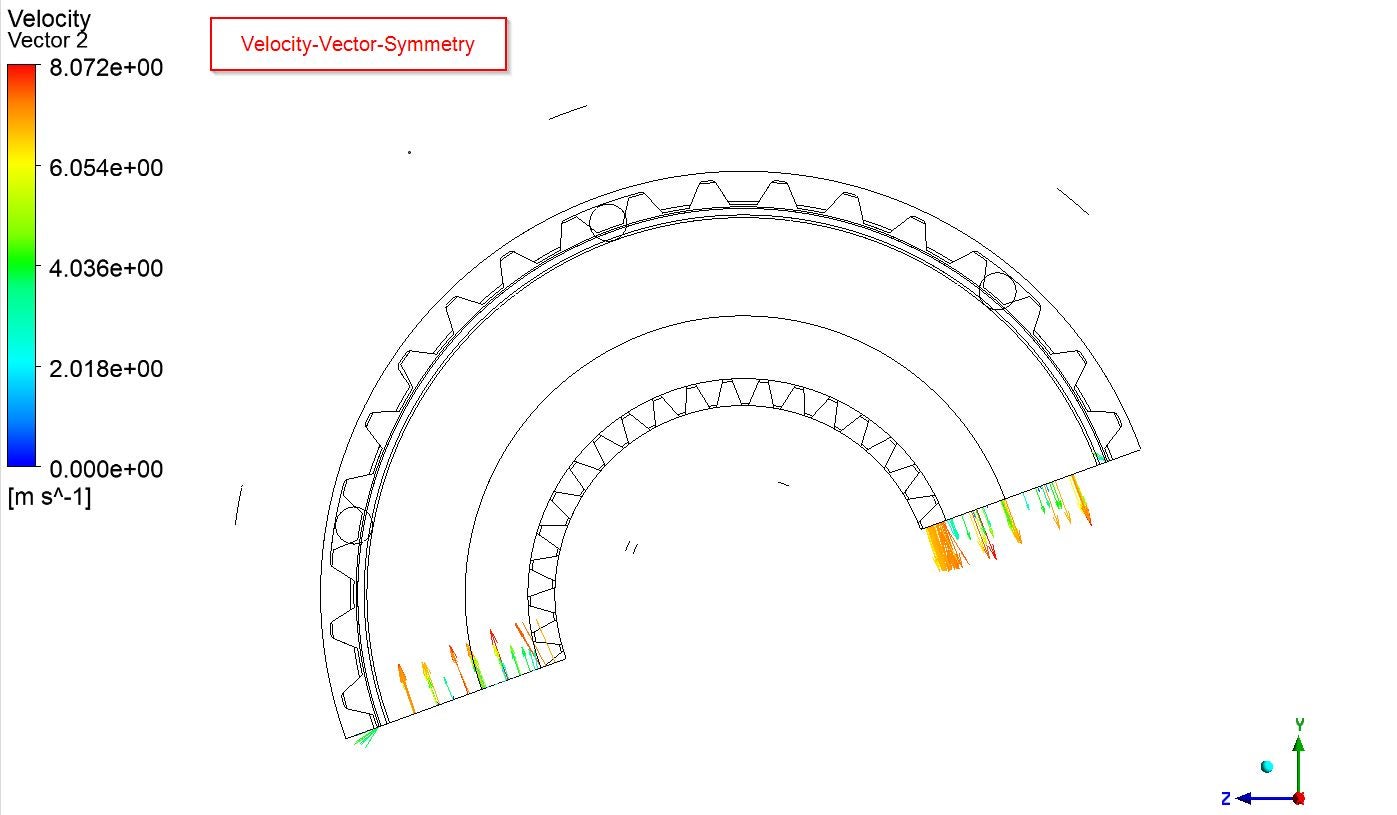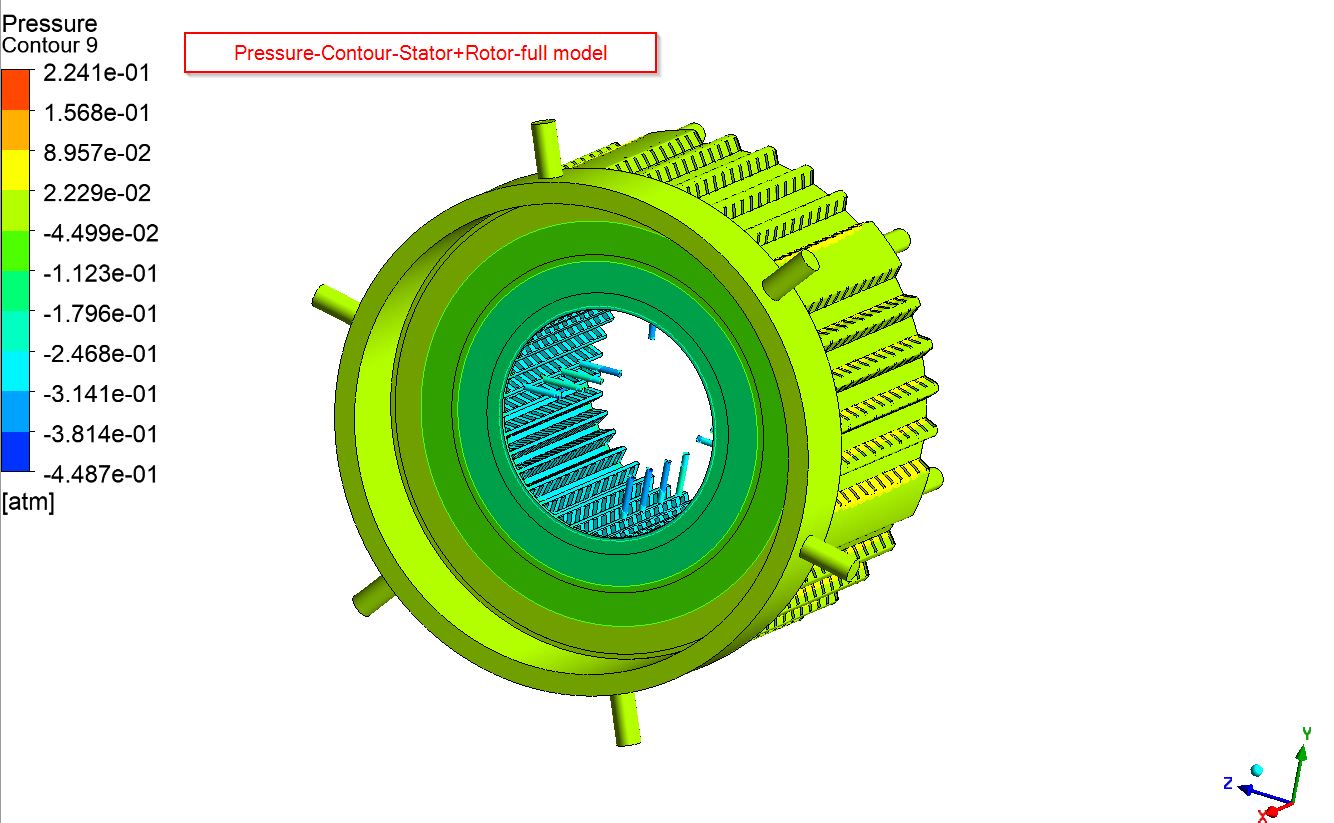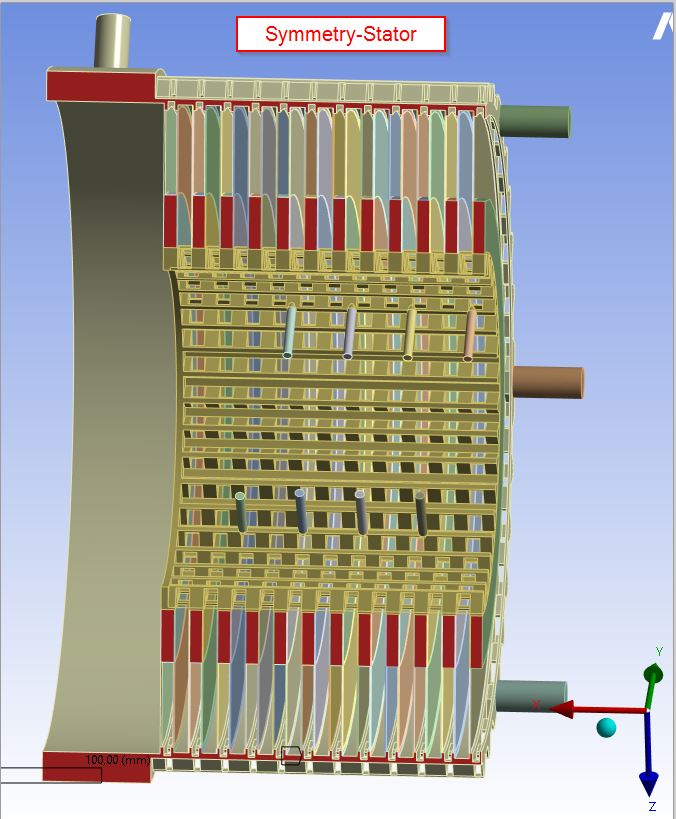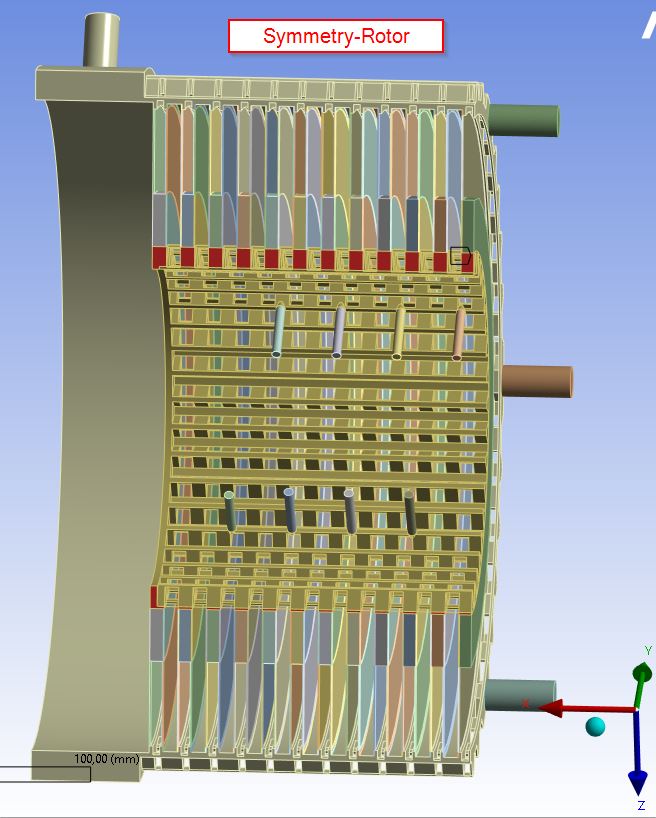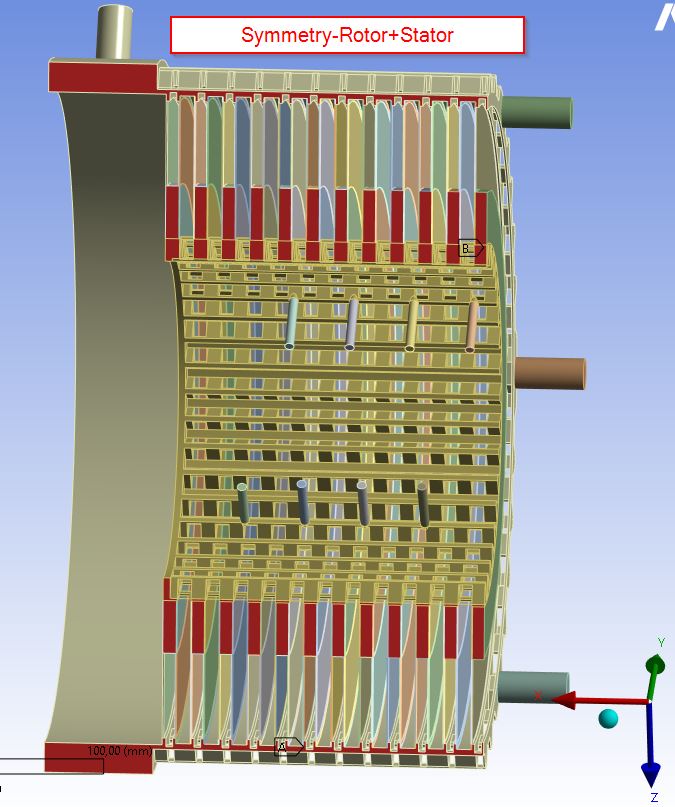-
-
December 15, 2024 at 9:56 am
Saeideh.Kermani-Afarani
SubscriberHello Dears,
I am simulating the oil supply of a wet-running multi-disk clutch in ANSYS Fluent. The model is divided into two domains: the stator (outer disks that do not rotate) and the rotor (inner disks that rotate). The rotation axis is aligned with the X-axis. I have defined symmetry conditions for the model and performed the simulation.
I expected the total pressure to increase in the radial direction due to centrifugal force. However, the results show the following: The velocity vectors are directed tangentially. The fluid flows into the lower symmetry plane and exits through the upper symmetry plane (flow in the tangential direction), which is as expected. However, the static pressure does not increase radially but rather in the tangential direction. This could be causing fluid buildup behind the upper symmetry plane, where the fluid should exit. The total pressure distribution resembles the static pressure pattern. However, the dynamic pressure in the rotating domain seems to be directed radially and increases in the radial direction.
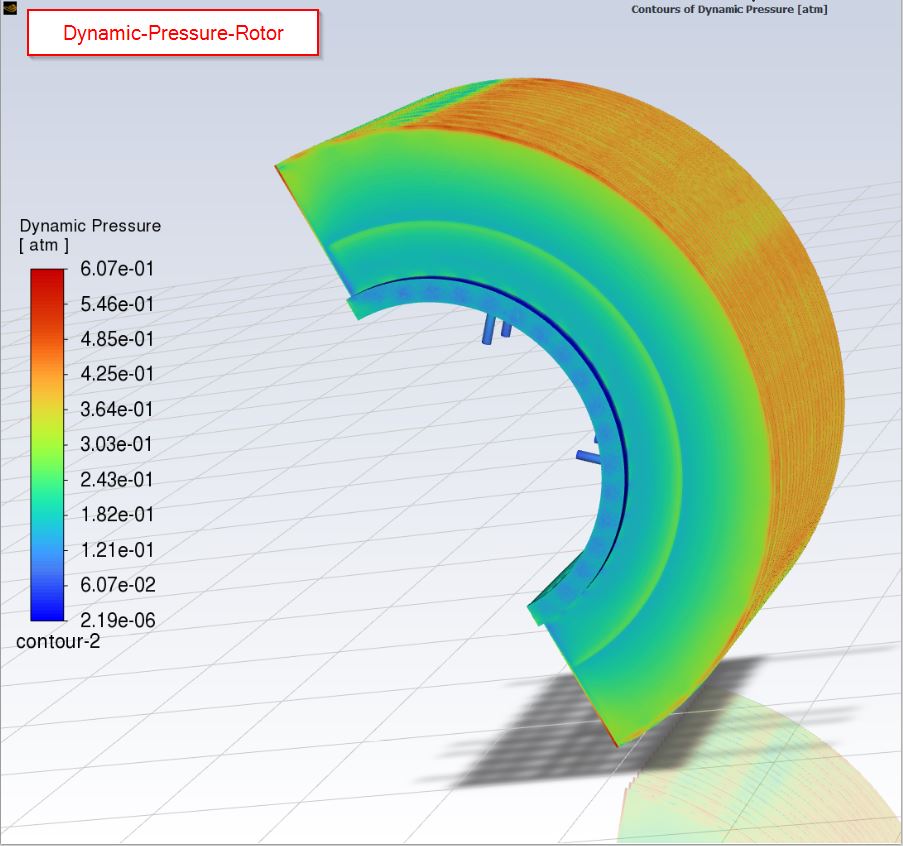
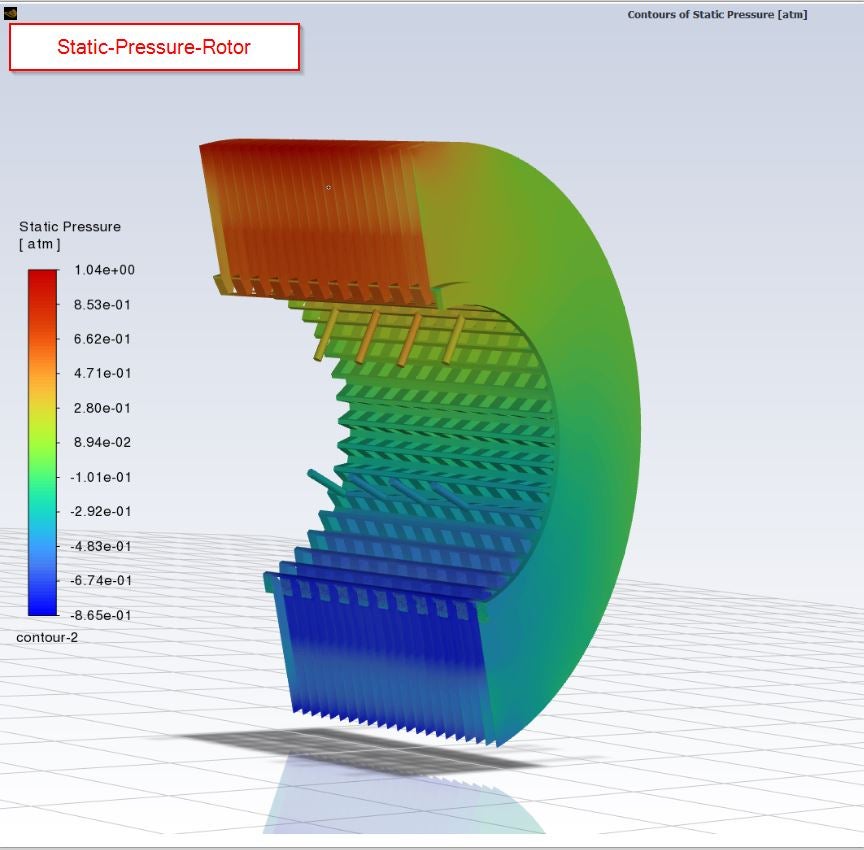
Interestingly, when I simulate the entire model (without symmetry conditions), the pressure contours match my expectations.
Additional Information:
- Gravity is turned off in the simulation.
- The simulation is a steady-state simulation with frame motion.
- Inlet type: Mass Flow Rate
- Outlet type: Pressure
Question: Why are the symmetry conditions being ignored in this case?
Best regards
-
December 16, 2024 at 11:47 am
Rob
Forum ModeratorHow can you have symmetry at the inlet/outlet part of the system? Rotational periodic may be a better option.
-
December 16, 2024 at 12:06 pm
Saeideh.Kermani-Afarani
SubscriberThank you very much for your response.
The full-circle model has 16 inlet pipes, while the symmetry model has 8 inlet pipes (all of them are grouped into one inlet).For the inlet type with mass flow rate, the mass flow rate for the symmetry model is halved and entered accordingly. The full-circle model has 6 axial outlet pipes (all of them are grouped into one axial-outlet) and 6 radial outlet pipes (all of them are grouped into one radial-outlet), while the symmetry model has half of that: 3 radial and 3 axial outlet pipes.For the outlet type with pressure, the ambient pressure is entered (for both the symmetry model and the full-circle model).Is this what you meant?
-
December 16, 2024 at 1:22 pm
Rob
Forum ModeratorYes, but symmetry is a boundary that reflects everything, how is a rotating domain symmetrical?
-
December 17, 2024 at 6:16 am
-
December 17, 2024 at 10:08 am
Rob
Forum ModeratorIf the domain is rotating those surfaces are not symmetrical for the flow: have a look at rotational periodic boundary type.
-
- You must be logged in to reply to this topic.


- air flow in and out of computer case
- Varying Bond model parameters to mimic soil particle cohesion/stiction
- Eroded Mass due to Erosion of Soil Particles by Fluids
- I am doing a corona simulation. But particles are not spreading.
- Centrifugal Fan Analysis for Determination of Characteristic Curve
- Issue to compile a UDF in ANSYS Fluent
- Guidance needed for Conjugate Heat Transfer Analysis for a 3s3p Li-ion Battery
- JACOBI Convergence Issue in ANSYS AQWA
- affinity not set
- Resuming SAG Mill Simulation with New Particle Batch in Rocky

-
4167
-
1487
-
1363
-
1194
-
1021

© 2025 Copyright ANSYS, Inc. All rights reserved.

